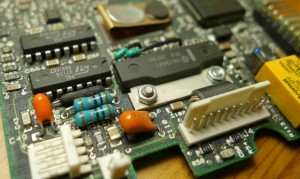Do you want a component that will never fail?
You are in charge of a maintenance area full of electrical equipment. It fails every day. You get phone calls every night. There is no money in your budget. Production people hate you…
One approach to this sorry situation is to spend money. Rip out all the bad equipment and put good stuff in its place. If you do this properly your plant will become more reliable and your life will become better generally. This is a valid approach and should definitely be one prong of your strategy to improve your plant. There is, however, a very effective alternative that you should also consider…
Imagine the ideal component. It costs nothing to buy. It needs no maintenance. It takes up zero space. And it never fails. Are you wondering where you can buy this marvellous component? Simple! The ideal component is the one you don’t have.
Here is a real example from a water treatment system I maintained many years ago. A large water valve was controlled by a pneumatic actuator which was in turn controlled by two electric solenoid valves. Feedback from a rather complex mechanism built into the valve returned open and closed limit positions to a PLC system. Frequently these limits gave false readings, stopping the plant.
An obvious solution would be a more expensive valve with better limits that don’t fall to bits. A low cost alternative might be to check the limit switches for tightness and security on a regular basis. Don’t limit yourself to these though. As an engineer you are employed to use a little more thought and creativity.
Think what would happen if you didn’t have the limits. In this case, not much, since the only part of the valve that ever failed was the limit mechanism. You do need to be careful though. Consider what would happen if the valve did fail and no-one realised. Sometimes there would be explosions, over-heating , plant damage and injuries. In this particular case the water levels would become unbalanced and the operator would receive another alarm anyway. We altered to PLC code to assume the valve was always driven successfully, ignored the limits, and never had another problem. The best limit switch is the one you don’t have.
Another common situation is the auxiliary contact on a contactor or MCB. People wire these to PLCs all the time to give indication signals of questionable value. Again, you need to use your brain! Think what the result of a problem would be with, and without, indication. Sometimes indication will be a vital warning, essential for safe operation. Other times it will be completely worthless, contributing no valuable information. This is a good example of someone designing a panel in an office without thinking through the practical operation. In the days before cheap PLCs would they have wired all those signals back to a light in the control room desk? For the closed indication on a 3.3kV fan circuit breaker – probably. For the auxiliary contact on the MCB that feeds the substation lights – I think not.
Picture a panel with auxiliary contacts wired to a PLC from every MCB and contactor. Then consider removing them. You would probably save about a quarter of the control wiring. The trunking is less full. The drawing is easier to understand. The panel is faster and cheaper to wire. Remove all those awkward auxiliary contact blocks and you have more space. Less stuff to test. Less things to go wrong. Your PLC becomes better too. You might save a couple of I/O blocks. The code becomes shorter. The I/O lists clearer. The testing faster…
You can take this idea further if you expand your knowledge into mechanical areas. In particular look at the hydraulic and water systems of you plant. These operate in a very similar way to electric circuits and you will soon be able to discuss with your mechanical colleagues whether a particular sensor or valve serves a useful purpose. Often there are two valves or two sensors on the same line for a good reason. Equally common are situations where a design change has resulted in two devices doing the same job by accident. If getting rid of a few limits is good just think how nice it would be to dispense with the entire valve!
I do suggest you take great care removing things from your plant but don’t assume everything is there for a good reason. Often a project engineer is just too busy to produce the optimum design or would rather keep their options open than make a decision. Unlike a project team, who have to put together an entire plant in a few months, a maintenance engineer can apply careful analysis to the few areas that give most problems. With a little thought you may soon find your most improved pieces of equipment are the ones you don’t have anymore!
